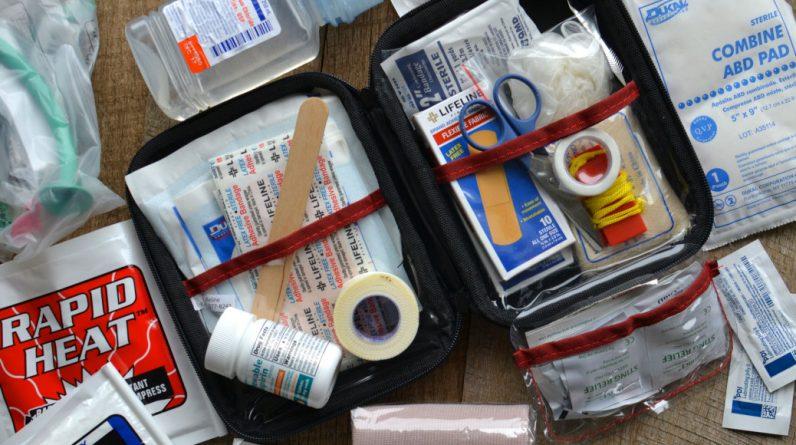
The importance of creating a Bug Out Plan can be argued to be just as crucial, if not more so, than having a packed Bug Out Bag. This is because a well-thought-out plan is what truly allows someone to escape danger, with or without a survival kit. In this article, we will be exploring ways to enhance our readiness for survival by discussing the process of executing a bug out or strategic evacuation.
What kinds of disasters can happen in your location?
Having historical knowledge is crucial for being prepared for emergencies. It is important to understand if your locality is prone to severe flooding, if you reside in an area prone to earthquakes, or if your town has experienced terrorist attacks in the past. Taking these factors into account when making your emergency plan can help eliminate certain options or make others more suitable.
What Are Your Strengths -VS- Weaknesses?
Considering these factors can help you customize your Bug Out Plan to match your strengths, minimize your weaknesses, and greatly enhance your chances of survival. Are you in excellent physical condition? Fantastic, that means you can carry a greater amount of survival supplies and plan for a longer journey. Do you possess knowledge of performing first aid in survival situations? This skill could be crucial if a fellow member of your group sustains an injury. Identifying your weaknesses can be as straightforward as understanding the specific survival skills you need to develop. Can you reliably start a fire? Are you capable of navigating using a map and compass during nighttime? Do you possess a good understanding of the local flora and fauna? Acquiring knowledge in these areas and other survival skills will significantly strengthen your Bug Out Plan. Remember, the more skills you possess, the less you will need to carry.
Plan on Multiple Possible Locations
Having a Bug Out Plan that includes four destinations, one in each cardinal direction (North, South, East, West), is considered the best approach for survival planning. However, this number may be reduced based on geographic factors and the probability of specific events happening. For instance, if you resided on the western side of the Mississippi River and were getting ready for a flood, there would be no need to take into account evacuating towards the East.
Including multiple destinations and multiple routes to each in your itinerary offers a significant advantage of flexibility that needs to be carefully planned in advance. Taking the time to engage in this planning process will ensure that you are prepared to face any unexpected crisis or misfortune.
Have Specific Locations In Mind
Including a designated location in your Bug Out Plan provides you with a purpose to strive for during your journey. This can greatly enhance your mental well-being and resilience in a survival situation. Surviving can be immensely challenging, even in favorable circumstances, and maintaining a positive mindset can significantly impact your chances of achieving success.
In order to enhance your chances of survival and reduce the amount of items you need to carry, it is beneficial to stash survival supplies at specific locations like a second home, a relative’s house, or a designated camp. This practice not only provides a psychological boost but also significantly increases your probability of staying alive. If none of these options are feasible, it is advisable to seek out large public facilities or designated shelters. Regardless of the choice, having a destination is an essential component of your Bug Out Plan.
How Fast Will You Be Able To Move?
Knowing your average travel speed is crucial for planning your routes. It allows you to determine the estimated time required to reach your destination, which in turn helps you decide the amount of survival equipment and provisions you need to either gather, transport, or store throughout the journey. Several factors significantly influence your average travel speed, including:
Weight of your Bag
It is recommended that the weight of a backpack should not exceed 25 to 30 percent of an individual’s body weight. Going beyond this limit can be extremely difficult, so it is important to plan your Bug Out Bag accordingly. It would be beneficial to test the weight of your bag by carrying it over a significant distance before finalizing your plan. It is essential to be able to carry the bag for several hours or even days. Carrying excessive weight will slow down your progress, so only bring the essentials needed for survival.
Terrain you will be crossing
When walking with a backpack, the typical speed ranges from 2.5 to 4 miles per hour on level ground. It is important to take into consideration the type of terrain you will encounter when planning your route. Many individuals mistakenly believe that hiking downhill is easier than hiking uphill; however, this is often not the case. Descending with a backpack requires careful footing and steady steps. Additionally, it is important to consider if you will be traversing rocky areas or crossing bodies of water. To maximize your chances of survival, it is crucial to plan and maintain a realistic walking pace.
Overall fitness
An individual who is in good physical shape will naturally be able to cover more distance compared to someone who is not fit. It’s important to evaluate yourself honestly in terms of this characteristic, as there is no room for arrogance when it comes to survival. If it has been a long time since you last went running, make appropriate arrangements. The advantage of creating a Bug Out Plan is that it exposes your weaknesses, allowing you to address them before they become a hindrance. If your plan could benefit from better fitness, start by taking it slow with walks or runs, gradually working towards conditioning your body to hike carrying the additional weight of a backpack.
Who You Bring Along
If you are making a Bug Out Plan for people who will be with you, it is important to take this into account. If you are accompanied by elderly individuals or children, you should include in your preparedness for survival the extra resources and time needed to help them. You can do this by planning your routes based on the distance you anticipate traveling at the pace of the slowest and least physically capable member of your group.
Factors to Include in Your Plans
Consider bringing an additional map that is waterproof or laminated, on which you have clearly indicated your planned routes and destinations. Furthermore, it is advisable to mark notable landmarks along each route to aid in navigation.
If you are evacuating with others, set up a designated meeting point in advance. This way, you can avoid a chaotic scenario where everyone is frantically trying to get in touch with each other instead of focusing on getting to safety.
Additionally, make sure to carry a compilation of emergency phone numbers for your acquaintances, loved ones, and governmental entities. This will allow you to remain connected and continually updated on the evolving calamity conditions.
It may be apparent, but it is important to actively utilize your Bug Out Bag in order to make your journey more convenient. This could involve using your hatchet to create a shelter or a pry tool to open a door for a quicker route. There is no benefit in putting effort into planning, packing, and carrying top-notch survival equipment if you are not going to use it. Have you ever experienced camping with a friend who brings numerous gadgets but never uses them? Who needs a battery-powered tent fan anyway? Avoid being that person.
It is recommended to start searching for a place to stay for the night approximately 2-3 hours before sunset each day. While you may not be fond of sacrificing so much travel time, doing so will allow you sufficient time to locate a secure and dry camping spot, prepare your food and water, and set up your shelter.
Understand that a person weighing 160 pounds will burn over 400 calories per hour when hiking, and over 500 calories if carrying a fully loaded backpack. This level of physical effort is similar to that of aerobic exercises or running. Include rest breaks and strategies for staying hydrated and energized in your survival preparations.
Conclusion
Developing a Bug Out Plan is a crucial aspect of your overall preparation for surviving. By employing these suggestions to construct a straightforward and efficient readiness plan, you will be equipped to endure and protect your family in the event of a crisis.




